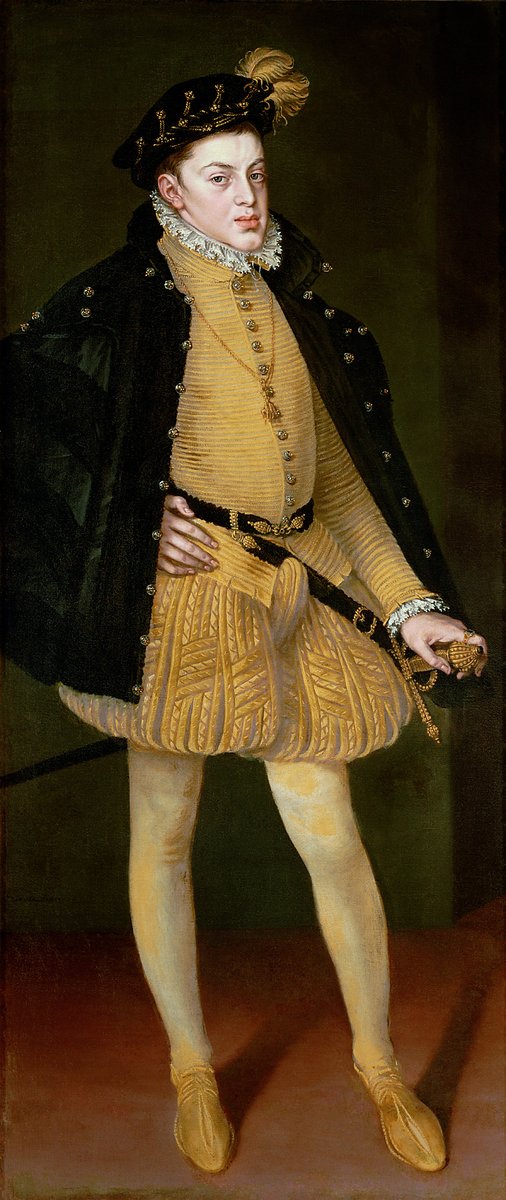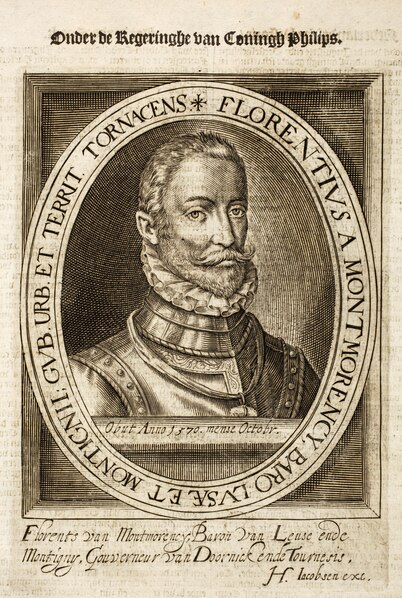OCR Specification focus:
‘Justice; the fates of Don Carlos and Montigny.’
Philip II’s reign confronted significant challenges over justice and royal authority, especially in cases like Don Carlos and Montigny, which exposed monarchy tensions.
Justice under Philip II
Philip II claimed to embody absolutist monarchy, where justice flowed from the king as God’s appointed ruler. The Spanish monarchy was meant to guarantee law, order, and the unity of Christendom, but justice was deeply entangled with political authority and the preservation of royal power.
The System of Justice
Philip relied upon:
The Council of Castile, the highest court in Spain, which administered justice across his kingdoms.
Regional councils and tribunals, reflecting Spain’s strong provincial traditions.
The Inquisition, which acted as a religious court but also reinforced royal control.
Despite these institutions, Philip’s personal involvement in high-profile trials demonstrated that justice was not impartial but instead served the preservation of monarchy and Catholic orthodoxy.
The Case of Don Carlos
Don Carlos, Philip II’s son and heir, became the centre of one of the most infamous judicial and dynastic crises in sixteenth-century Spain.

Infant Don Carlos (1564) by Alonso Sánchez Coello, Kunsthistorisches Museum, is a canonical likeness of Philip II’s heir. The full-length pose, rich textiles and sword communicate princely rank central to the case discussed. Source
Background
Born in 1545, Don Carlos was frail and suffered from mental instability.
He displayed erratic behaviour and hostility towards his father.
He aligned himself with opponents of Philip’s policies, particularly those opposing repression in the Netherlands.
Arrest and Imprisonment
In 1568, Philip personally ordered Don Carlos’s arrest:
Don Carlos was accused of treasonous intent, including plotting to flee to the Low Countries to lead rebellion against Spanish forces.
He was confined under guard and denied contact with the outside world.
This imprisonment shocked Europe, as it was rare for a monarch to detain his own heir.
Treason: A crime involving betrayal of one’s sovereign or state, often by plotting rebellion, aiding enemies, or attempting to overthrow lawful authority.
Although Philip framed his actions as lawful, the case raised doubts about whether justice was being pursued or whether Philip was eliminating a political and dynastic threat.
Death of Don Carlos
Don Carlos died in July 1568 under mysterious circumstances.
Official reports claimed natural causes, but many contemporaries suspected he was executed or poisoned under Philip’s orders.
His death provoked outrage in Protestant Europe, where propaganda depicted him as a martyr to tyranny, further damaging Philip’s reputation.
The Fate of Montigny
Another controversial judicial case was that of Lamoral de Montigny, a nobleman from the Spanish Netherlands.

Engraved portrait of Floris (Lamoral) van Montmorency, Baron of Montigny, reproduced from Emanuel van Meteren’s Historie (1614). The Golden Fleece collar signals his high status and why his secret trial and execution were politically explosive. Source
Montigny’s Role
Montigny was one of several noble envoys sent to Spain in 1566 to present grievances about Philip’s centralising and anti-heresy policies.
He represented the moderate nobility, seeking reform rather than rebellion.
Arrest and Imprisonment
Initially treated with courtesy, Montigny soon fell under suspicion for sympathies with rebels in the Netherlands.
In 1567, Philip, influenced by advisers and by the discovery of compromising letters, ordered Montigny’s detention.
He was confined in Simancas Castle, where he remained imprisoned for years without public trial.

Exterior of the Castle of Simancas (Valladolid), later home of the Archivo General de Simancas. Its fortified design conveys the coercive, state-controlled environment of Philip II’s detentions referenced. Source
Execution
In 1570, Montigny was secretly executed on Philip’s orders.
The method was hushed: he was strangled in his cell, ensuring no public outcry.
Philip justified the act as a necessity of state, claiming Montigny’s treachery endangered both the Spanish monarchy and Catholic faith.
Reason of State: The principle that the security and survival of the state justify extraordinary or even extralegal actions, including suppression of individuals.
This highlighted Philip’s reliance on the concept that political stability outweighed legal norms when confronting perceived threats.
Broader Implications of Justice
Justice as Political Instrument
Both the Don Carlos and Montigny cases reveal how Philip manipulated justice:
Justice was not simply legal but a tool of monarchical control.
Trials and punishments were often secretive, undermining transparency but maximising royal authority.
Justice served both dynastic security and the defence of Catholicism.
Domestic and International Reactions
In Spain, Philip’s actions were defended by loyalists as necessary for order.
Abroad, particularly in Protestant states, these cases fuelled the image of Philip as a despotic monarch.
The deaths of Don Carlos and Montigny became part of anti-Spanish propaganda, contributing to the “Black Legend” portrayal of Spain as cruel and tyrannical.
Lessons on Philip’s Rule
These episodes exemplify:
Personal monarchy: Philip’s direct involvement in judicial matters, bypassing conventional procedures.
Suspicion and secrecy: reliance on hidden trials, imprisonment, and execution to deal with threats.
Conflict between justice and absolutism: official legality was often sacrificed to safeguard the monarchy and Catholic order.
FAQ
Don Carlos’s erratic behaviour, combined with his sympathy for opposition in the Netherlands, suggested he might challenge Philip’s policies. His willingness to align with factions critical of royal government raised fears of rebellion.
Philip II also believed his son’s instability made him unfit to rule, but executing or disinheriting him outright could provoke unrest. Imprisonment was therefore seen as a politically “safer” option, despite the risks to Philip’s reputation.
Protestant states in northern Europe used Don Carlos’s death as propaganda, portraying him as a victim of Spanish tyranny.
In particular:
The Dutch rebels circulated pamphlets depicting Carlos as a martyred prince.
England and German Protestant territories exploited the story to fuel anti-Spanish sentiment.
Even Catholic powers expressed unease, as Philip’s treatment of his heir was considered extreme.
Simancas Castle functioned as both fortress and state prison. Its remote location near Valladolid made it ideal for holding high-profile detainees under strict secrecy.
The castle symbolised the blending of justice and royal authority. Prisoners like Montigny were not subjected to open trials but instead held indefinitely, reflecting Philip’s preference for private resolution over public judicial procedure.
Philip II avoided a public trial because:
It risked exposing dissent within the Netherlands nobility.
A public execution might have created sympathy for Montigny, undermining Philip’s authority.
Secrecy allowed Philip to frame the act as “reason of state” rather than legal justice.
By keeping the method quiet (strangulation in prison), Philip preserved a façade of control, even though rumours of the act still spread across Europe.
The “Black Legend” referred to Protestant and rival propaganda portraying Spain as cruel, secretive, and tyrannical.
Don Carlos was presented as an innocent prince killed by his father.
Montigny’s secret death was used to highlight Spanish dishonesty and repression.
Both stories circulated widely in print, feeding Europe’s perception of Spain as a despotic empire.
These narratives, whether exaggerated or not, undermined Spain’s moral authority and heightened resistance to Philip’s rule.
Practice Questions
Question 1 (2 marks)
Who was Don Carlos, and why did his imprisonment in 1568 cause controversy?
Mark scheme:
1 mark for identifying Don Carlos as Philip II’s son/heir.
1 mark for explaining that his imprisonment caused controversy because it was unusual for a monarch to imprison his own heir and raised suspicions of tyranny.
Question 2 (6 marks)
Explain why the fate of Montigny was significant for Philip II’s rule.
Mark scheme:
1 mark for stating Montigny was a noble envoy from the Netherlands.
1 mark for noting he was arrested and imprisoned in Simancas Castle.
1 mark for mentioning his secret execution (strangled in his cell, 1570).
1 mark for linking his execution to Philip’s reliance on “reason of state” to justify extraordinary actions.
1 mark for explaining that his treatment damaged trust between Philip and the Netherlandish nobility, feeding rebellion.
1 mark for noting that it contributed to Philip’s wider reputation abroad as a despotic monarch.

